Indulge in 20+ Costa Rican Desserts
This post may contain affiliate links.
Discover the best Costa Rican dessert recipes, ranging from baked goods to frozen treats.
Costa Rican Desserts – A Long Tradition of Cocina Costarricense
Dessert- it’s the best part of any meal, right? Costa Rican dessert is no exception, as the variety of locally grown fresh fruits and the abundance of sugar cane mean sweet treats are abundant.
From homemade candies to baked goods to stovetop dessert recipes, there is no shortage of amazing dessert recipes from the land of Pura Vida. Before we get to the recipes, here are a few details you need to know about desserts in Costa Rica:
You should not expect to be served dessert after every meal- rather desserts are reserved for special occasions such as birthday parties, weddings, and special dinners. It is not common for dessert to be on every menu- especially at Costa Rican sodas, which are small locally owned restaurants that serve traditional Costa Rican food.
Most Costa Rican homes do not have ovens- traditional homes employ a gas stovetop for cooking. There are bakeries (panaderías) in almost every neighborhood, and most grocery stores and pulperias also have baked goods for sale at a reasonable price.
To that end, you will find that the foods we think of as dessert foods here in the United States are often consumed during the afternoon coffee hour. Coffee is accompanied by everything from cake to custard tarts to sweet bread and sweet empanadas.
It is also common to consume frozen desserts on the street or at the beach. You can find popsicles, scoops of ice cream, snow cones, and more for sale on many street corners throughout the country.
Related post: 30 Foods You Must Try In Costa Rica
Don’t Miss These Costa Rican Desserts
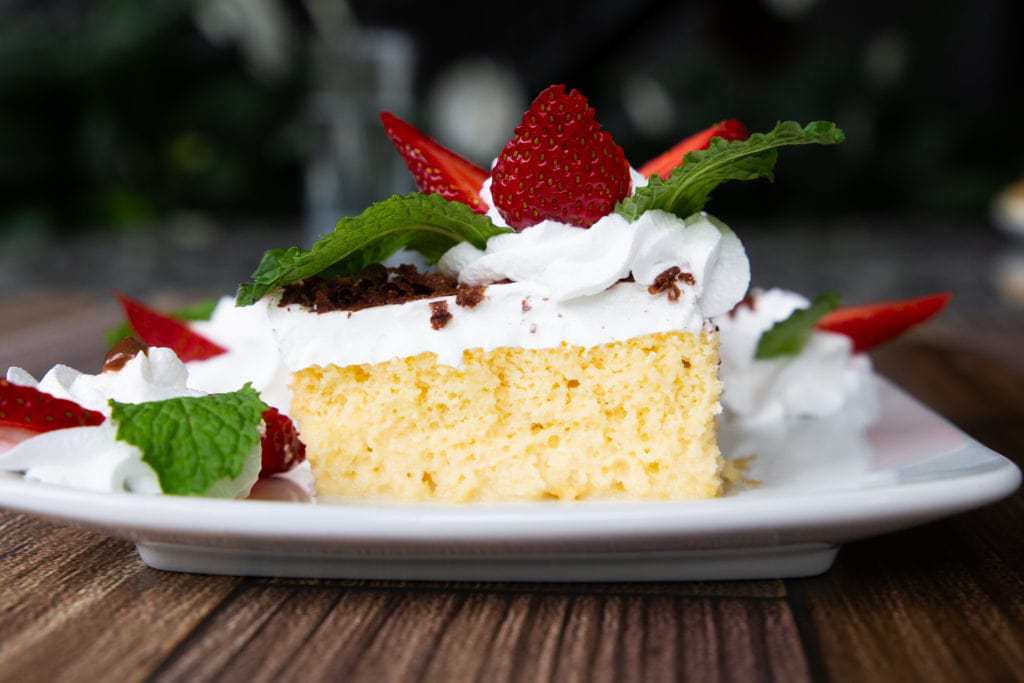
Costa Rican Tres Leches
Tres leches cake is a favorite Costa Rican recipe- and the most delicious dessert. It’s a sponge cake baked from scratch with sugar, flour, eggs, and vanilla. Add three types of milk- evaporated milk, heavy cream, and sweetened condensed milk and top with Chantilly cream for an incredibly rich flavor.
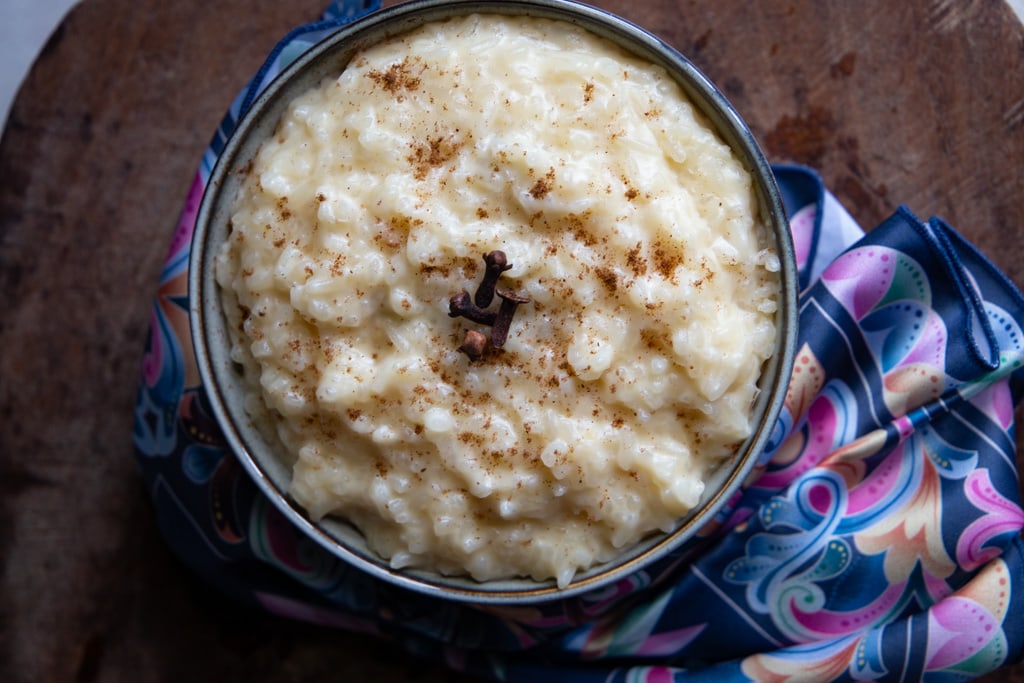
Arroz con leche (Rice Pudding)
Arroz con leche has as many variations throughout Latin America as there are countries, and Costa Rica is no exception. We keep it pretty simple with white rice, cinnamon, sweetened condensed milk and sugar. Some families add fruit slices such as pineapple, or coconut into their versions too.
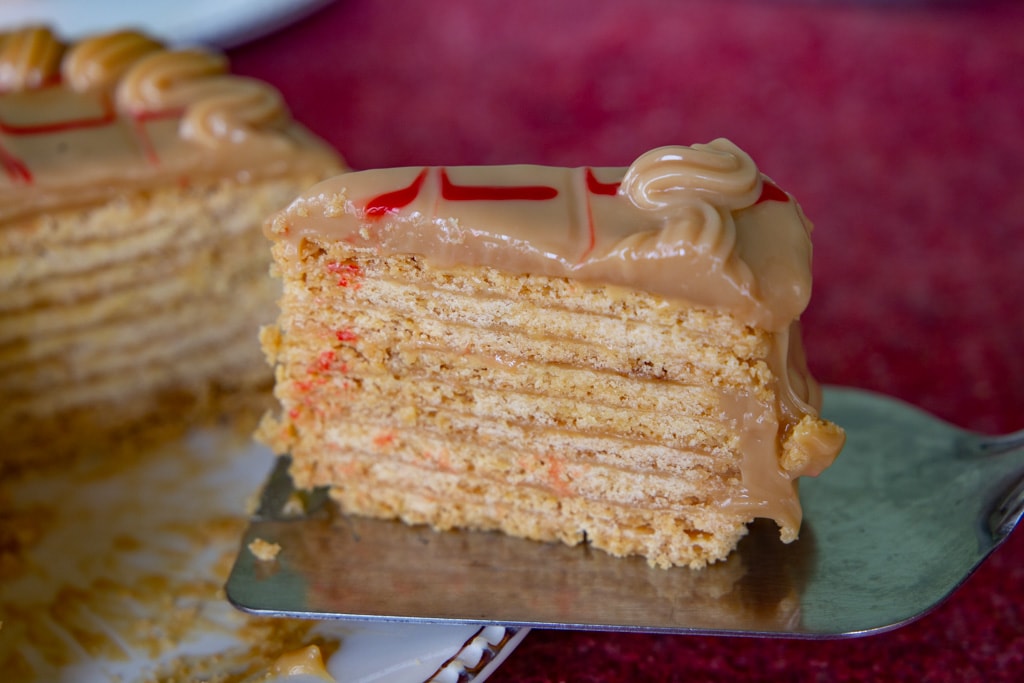
Torta Chilena
Costa Rican torta chilena is arguably one of the absolute most popular desserts in Costa Rica. (I know, I know, I keep saying that but these first three recipes are truly the top three ever!)
The torta chilena is the Costa Rican answer to the Chilean mil hojas, or the French mille feuille. Homemade pie crusts are layered on top of each other with homemade dulce de leche in between. It can be customary to top the whole cake with dulce de leche or chantilly cream.
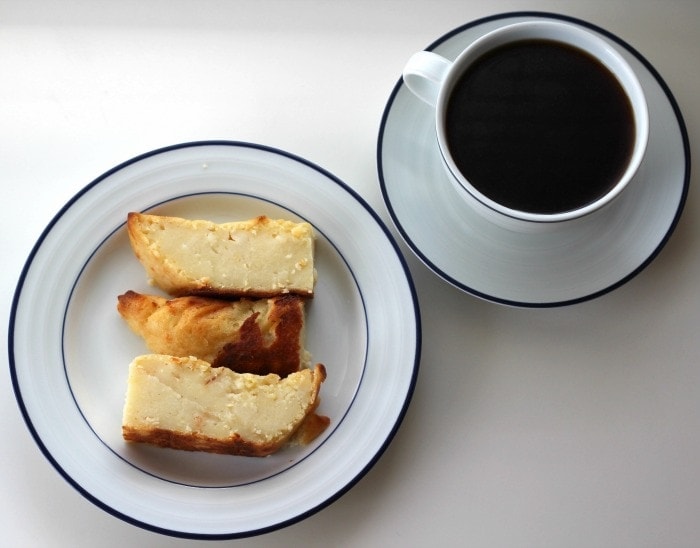
Tamal de masa
A Costa Rican tamal de masa is technically a dessert, but it is on the less sweet side of the Costa Rican dessert spectrum. You combine the same masa used to make tortillas with sugar, buttermilk, and white cheese.
Once it’s baked, you’ll end up with a thick and creamy tamal-like mound that’s sweet inside and a little crunchy outside. You can find this dessert at most bakeries- it will be next to the cash register.
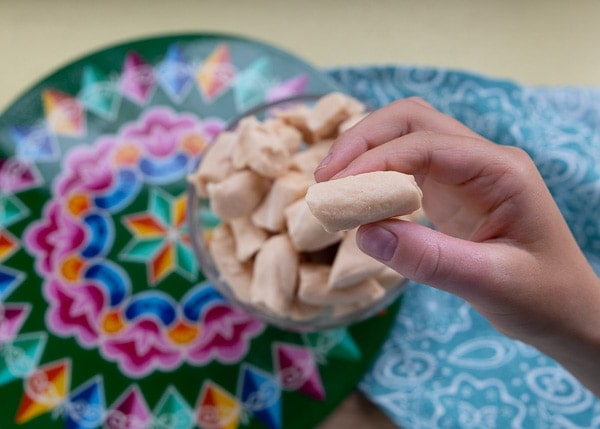
Melchochas de Natilla
Melcochas de natilla is the Spanish name for a traditional Costa Rican candy made from sour cream and sugar. After boiling the two ingredients together, the cooled mixture is kneaded until it has a taffy-like consistency.
Local artisans then roll out the taffy and let it cool before cutting it into bite-sized pieces.
My husband’s family is from the town of San Ramon in the Central Valley, where melochas de natilla originated. On December 7th of each year, people hand out melcochas de natilla to their friends and family as a reminder of Mary, the mother of Jesus.
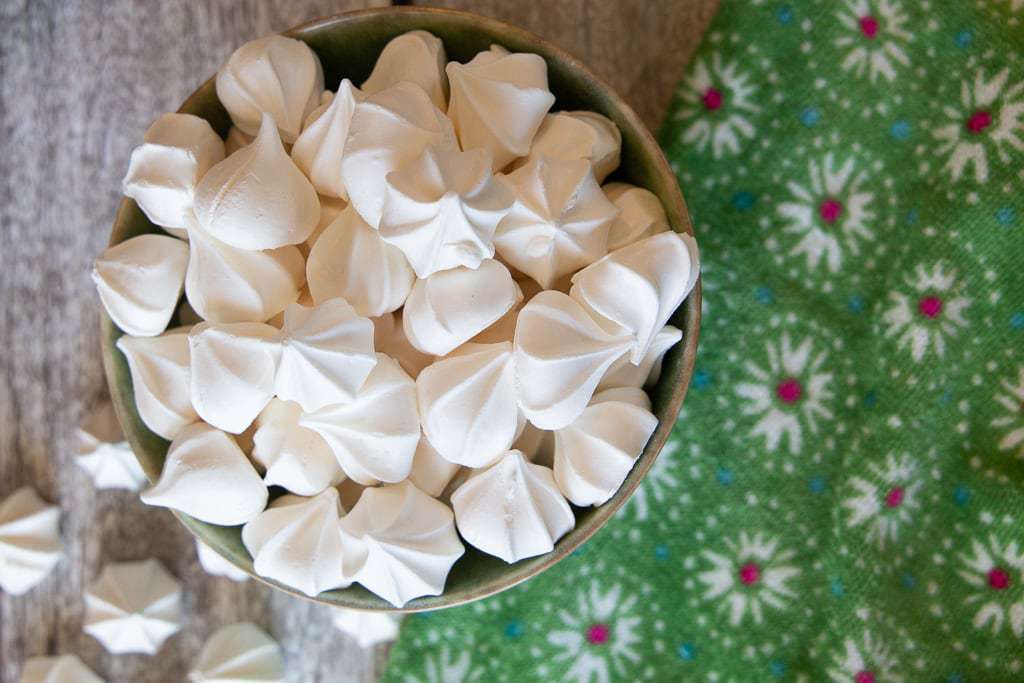
Suspiros (Costa Rican Merengue)
Merengue cookies are a popular dessert worldwide, and in Costa Rica, we call them suspiros. These dreamy cookies combine egg whites and white sugar which are mixed together and then baked into a cloud-like cookie.
You’ll most often find these in small packages next to the cash register at restaurants and brad shops, and they are relatively inexpensive. Given how labor-intensive they are, I highly recommend trying the storebought version when you have the chance!
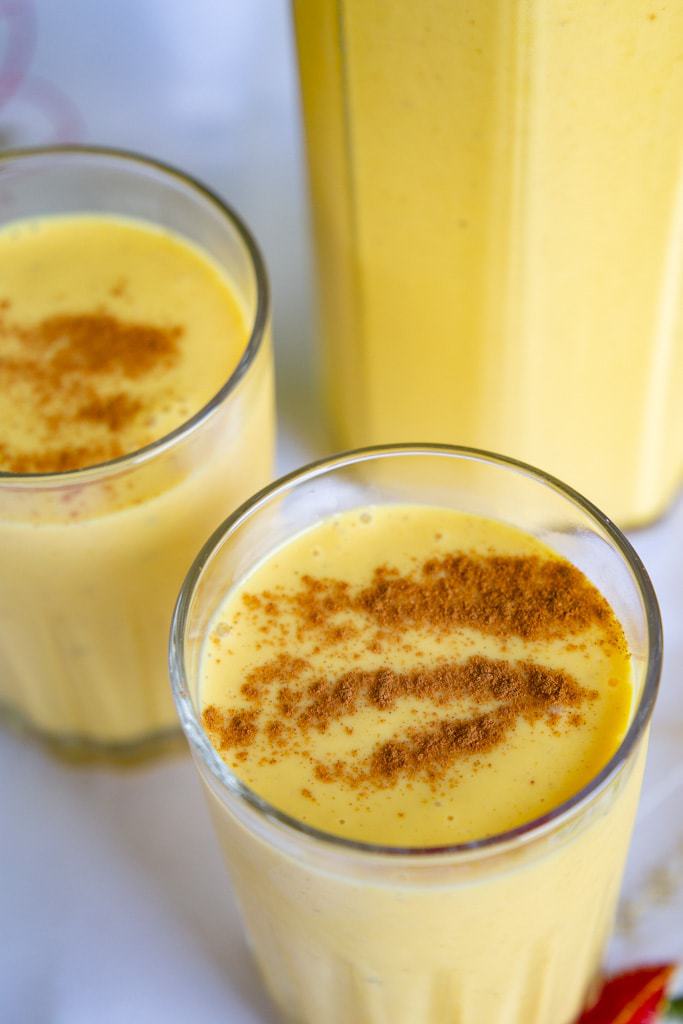
Costa Rican Rompope
Costa Rican rompope is traditional egg nog served mostly at Christmas time. Combining cornstarch, sugar, and milk, this sweet drink is usually served cold and with a heavy dose of Costa Rican rum mixed in.
It’s a popular Costa Rican cocktail, but most people only drink it in December. I’ll let you in on a little secret though- you can find packets of dry mix year-round in grocery stores. If you are dying to try this on your next trip to Costa Rica, just grab a packet and add milk and rum!
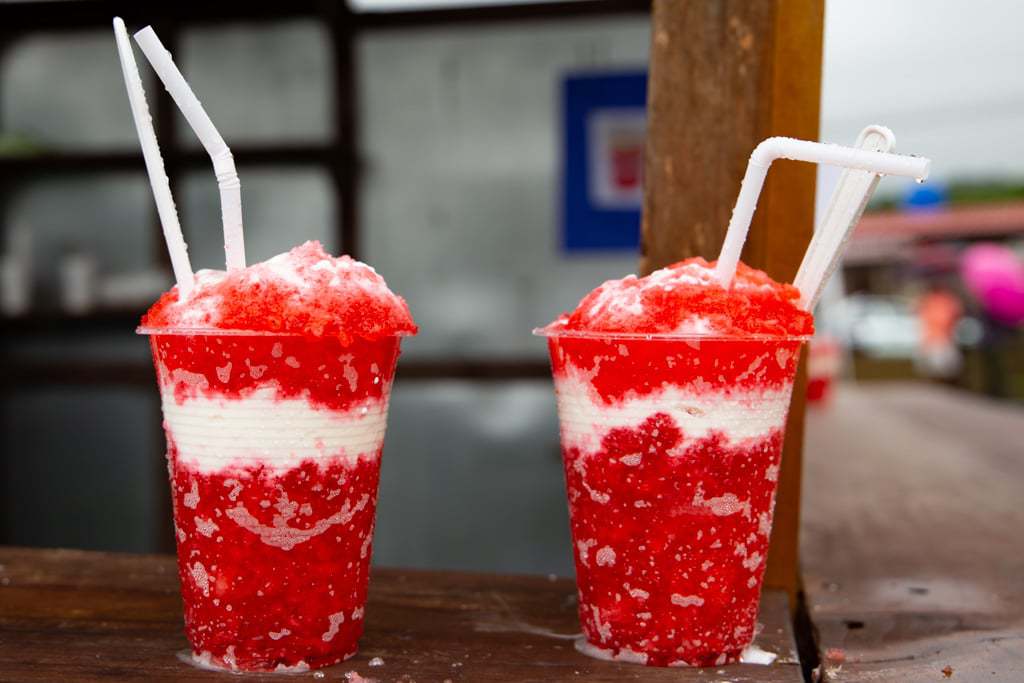
Costa Rican Snow Cone
The Costa Rican show cone (also called a copo or a Churchill) has such a unique twist on a traditional snow cone that I always insist people try to find them when they visit Costa Rica.
While most of Latin America has it’s own version of a snow cone (think piraguas, raspados and granizados) only Costa Rica adds powered milk to their version.
You’ll layer shaved ice and powdered milk, and then cover it all with syrup. Don’t stop there, though! We then drizzle sweetened condensed milk on the top. Sooooo good!
Some vendors even add a scoop of ice cream on the top too. You can usually find the Costa Rican snow cones on the beach or in a town square- there are vendors that make them by hand and serve them ice cold. Don’t miss them!
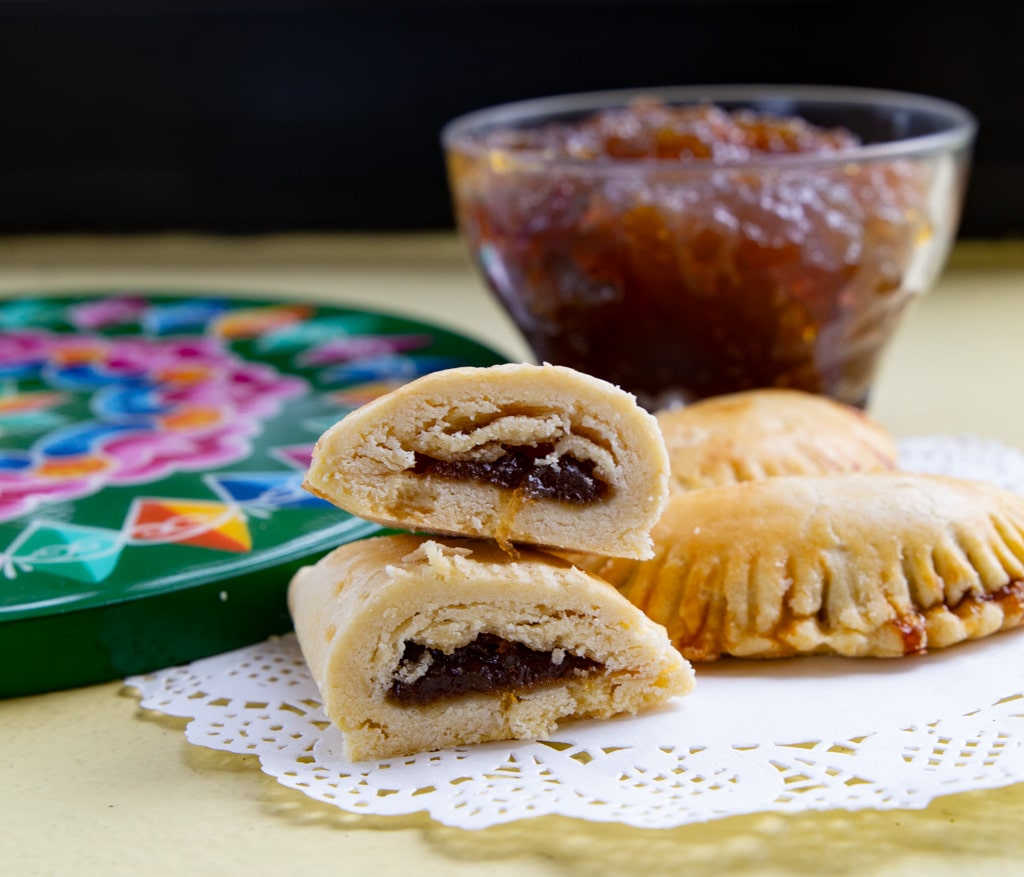
Empanadas de chiverre
Costa Rican empanadas de chiverre have to be one of my personal favorite Costa Rican desserts. Traditional Costa Rican dessert empanada dough is savory- it is made from white flour, margarine and cream- but no sugar!
There are tons of versions of sweet empanadas- empanadas de cajeta, empanadas de dulce de leche, empanadas de coco and Pineapple empanadas.
The chiverre empanadas are extra special because they come from the chiverre squash, which is only harvested once a year. Artisans cut open the squash, boil the insides with brown sugar, and create a jam from the squash. This jam is the filling for the empanadas de chiverre- and they are delightful.
If you want to try these empanadas, you have two options- visit during Costa Rican Holy Week when families share these empanadas with each other. Or you can follow my recipe using this chiverre filling from Amazon.
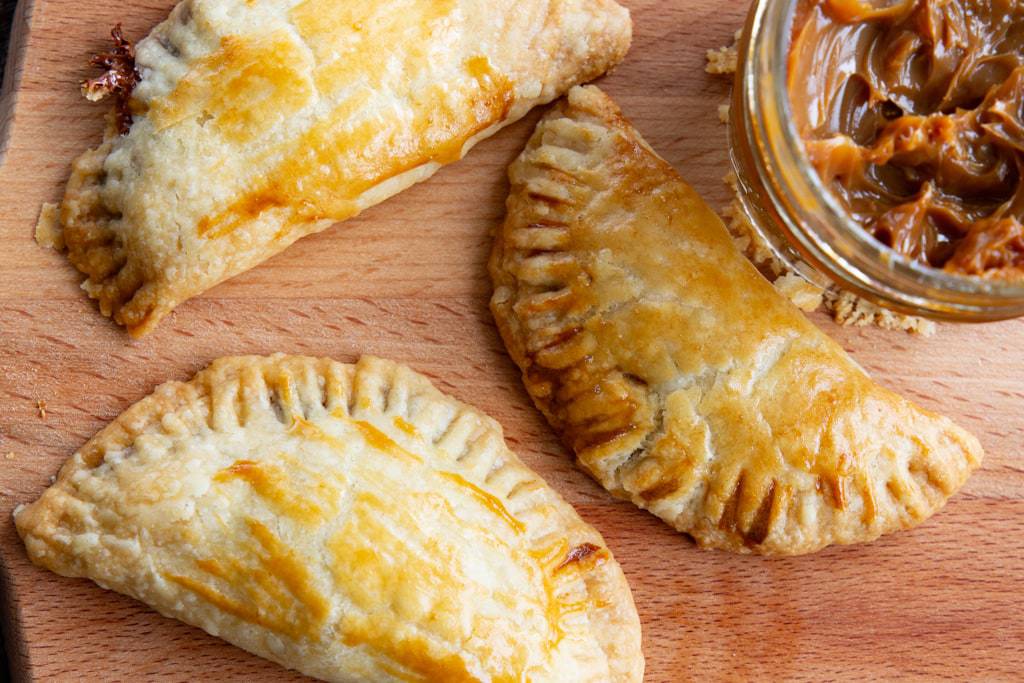
Empanadas de Cajeta
These crisp and buttery Costa Rican cajeta empanadas are filled with a delicious caramel-like spread made with goat’s milk. Perfect for dunking in coffee or satisfying a sweet tooth! Much like dulce de leche, cajeta is a Latin American caramel sauce traditionally prepared with goat’s milk. Make your own with this Costa Rican cajeta recipe.
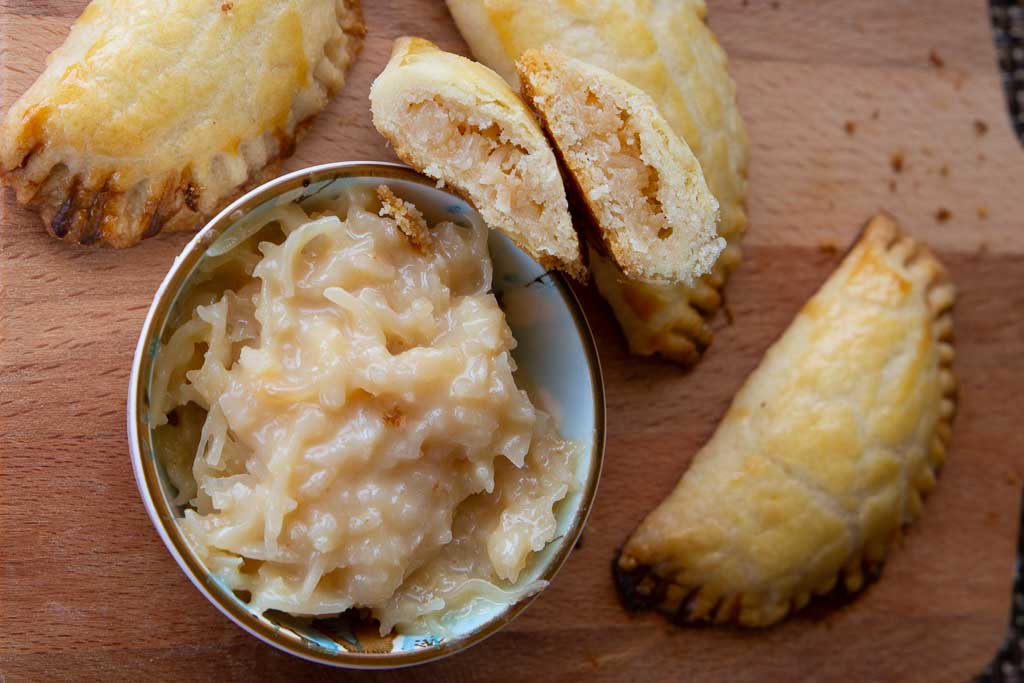
Coconut Empanadas
Costa Rican coconut empanadas are a labor of love because, before you make them, you also have to make the filling. The filling is called miel de coco, and it’s a delightful mix of sweetened condensed milk and coconut, boiled until it’s sweeter than sweet.
Once you’ve made that, you just add the dulce de coco as a filling for the empanadas! Eat them warm, with agua dulce or a cup of hot traditional Costa Rican coffee.
YOU MIGHT ALSO LIKE: Best Coffee In Costa Rica
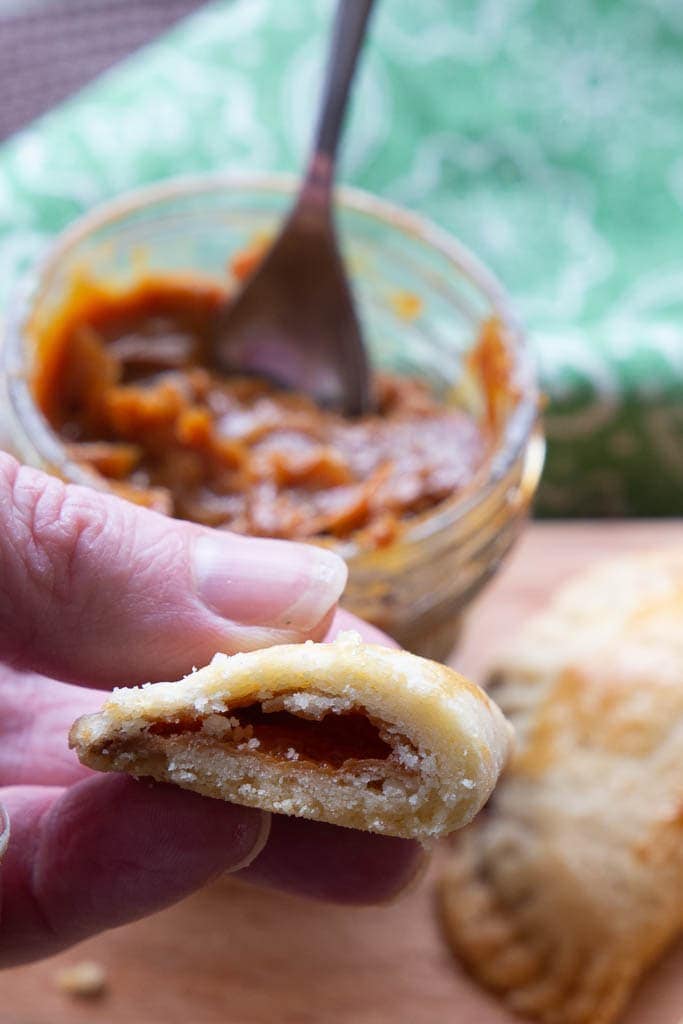
Dulce de leche Empanadas
Much like the coconut empanadas, Costa Rican dulce de leche empandas are a flavor explosion. Since the filling is so sweet, it’s great that the empanada dough is savory.
You can often find dulce de leche empanadas in stores across Costa Rica as they are extremely popular with ticos. One hint if you make them yourself- don’t put too much filling in the middle of the empanada- it will run out on your baking tray and it’s almost impossible to scrape off once that happens!
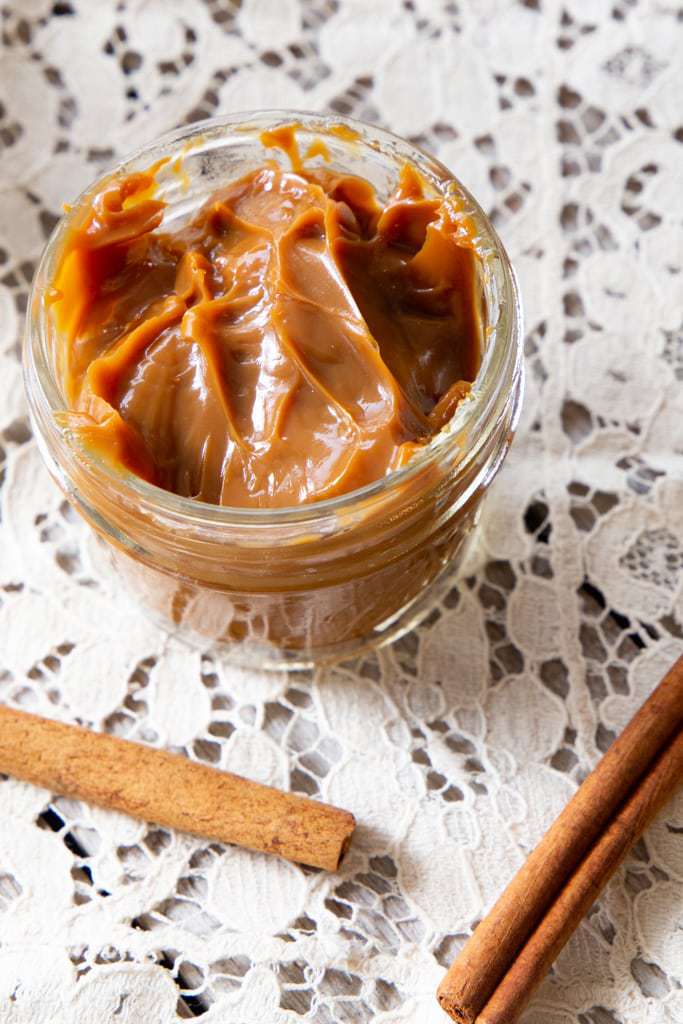
Homemade dulce de leche
While you can buy your own dulce de leche both in the US and in Costa Rica, it’s so easy to make yourself at home and a thousand times better.
Once you make it, eat it like a tico! Costa Ricans will often pour some dulce de leche over a white after-like cookie (it almost reminds me of a Catholic host) and enjoy it that way. You’ll also use dulce de leche in alfajores, torta chilena and even empanadas. I dare you to try making your own- it’s so worth it!
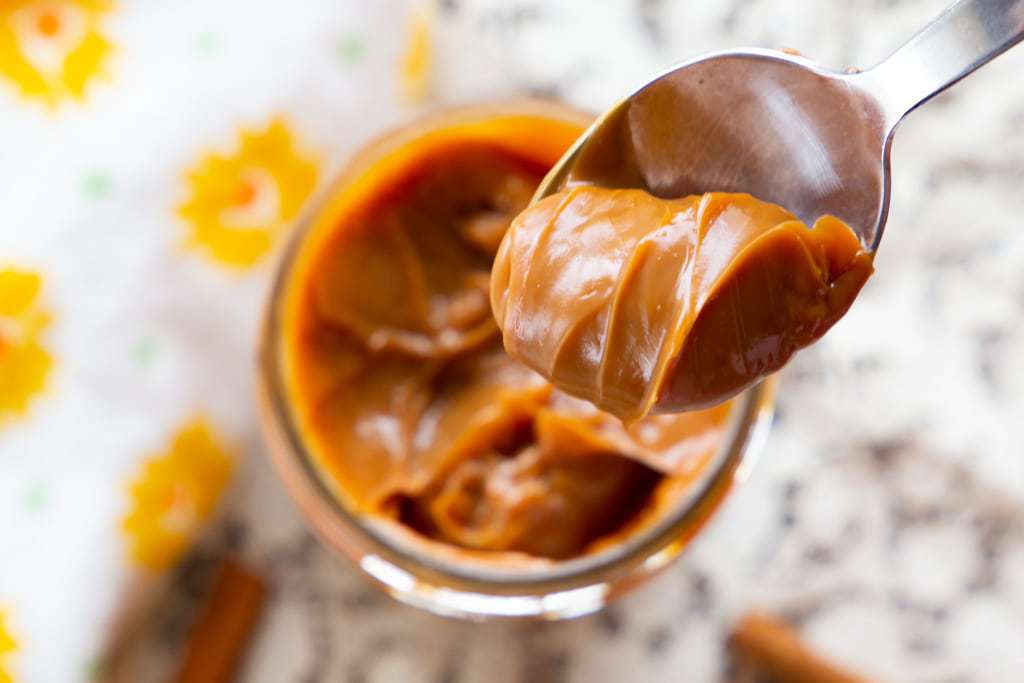
Homemade Cajeta
Costa Rican cajeta is basically dulce de leche made with goat’s milk instead of cow’s milk, You can use it just like you do dulce de leche, and the flavor is so similar I doubt you’ll notice the difference.
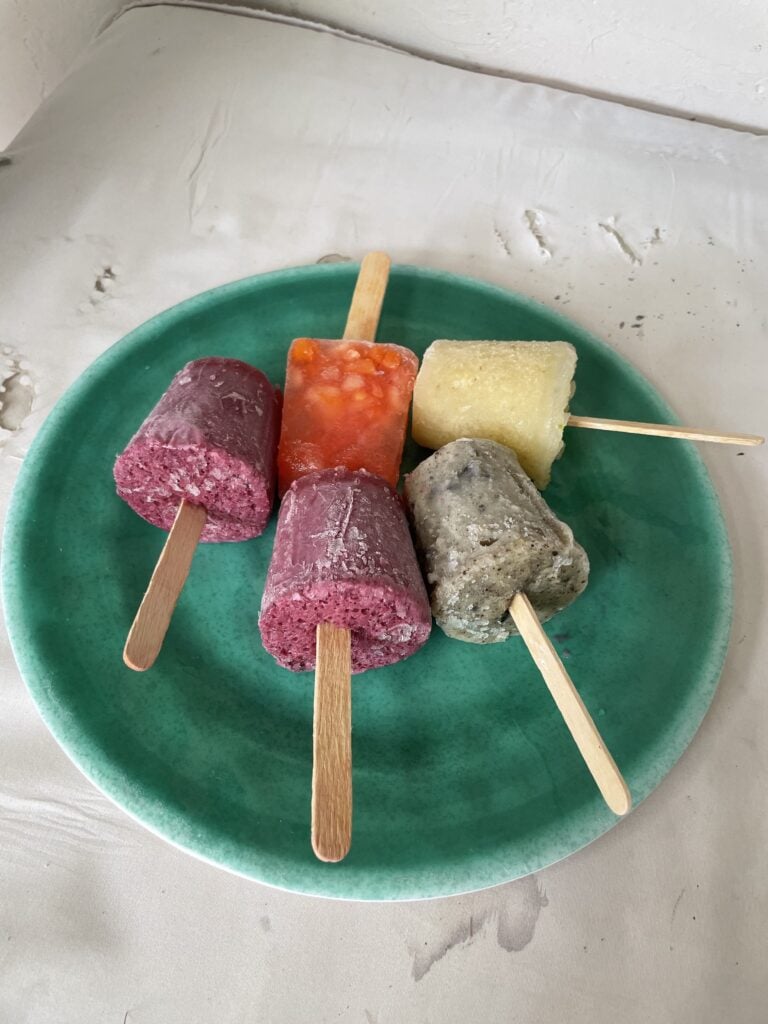
Costa Rican Ice Cream
Costa Ricans love ice cream, as evidenced by the countless ice cream shops in every town! The most popular ice cream shop in the country is Pops, but my favorite ice cream is the homemade kind found at markets and pulperias almost everywhere.
Fresh fruit of every kind (from blackberries to coconut) is pureed with sugar and then either blended with milk or water until smooth.
When making homemade ice cream, you then pour your liquid mixture into a Dixie cup and put a popsicle stick in. Freeze until hard and you’ve got homemade Costa Rican ice cream!
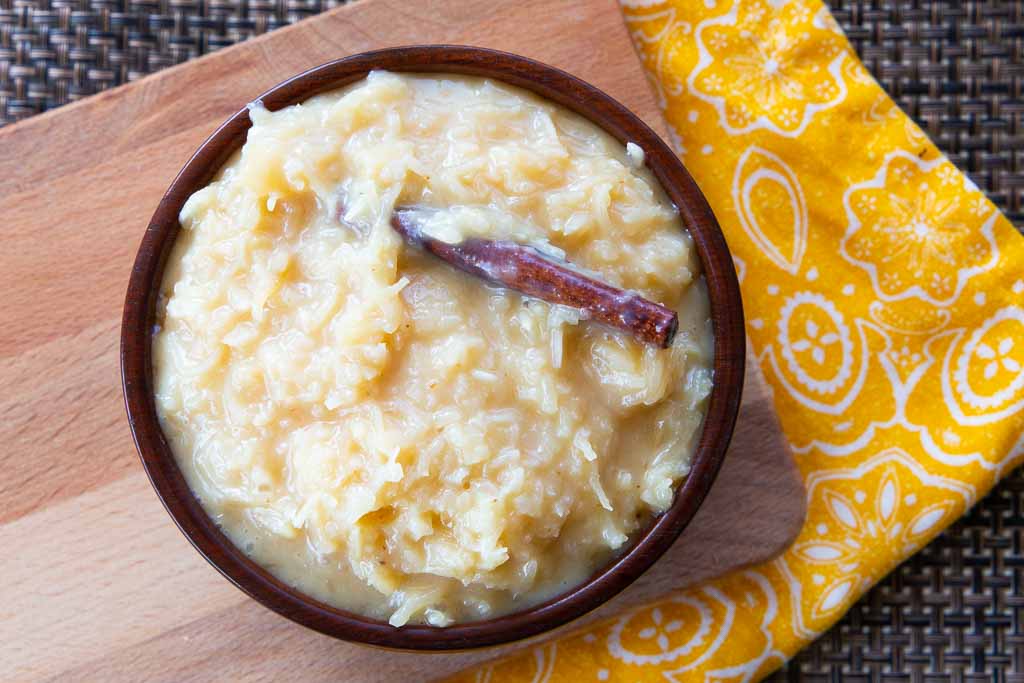
Coconut Pudding (miel de Coco)
Costa Rican miel de coco is a milk-based thick syrupy dessert made from coconut flakes and sweetened condensed milk, then boiled until thick and sweet.
Many people will eat it after a meal with a spoon- but be warned. It’s sweet. Like really sweet. So if you don’t have that much of a sweet tooth you can always use this dessert as a filling for empanadas.
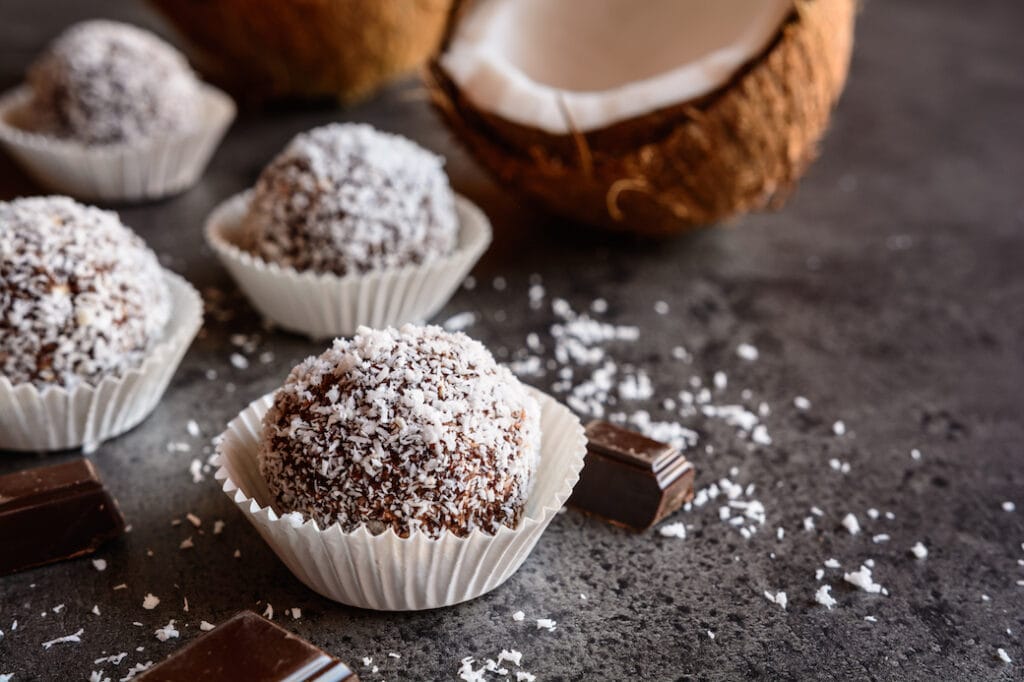
Bolitas de Coco
Bolitas de coco, literally translated to Coconut Balls, is a super popular Costa Rican dessert that you can find almost anywhere.
Using traditional crumbled galletas Maria, sweetened condensed milk, and butter, you’ll make a simple cookie dough that you then form into balls and roll into coconut. These are delightful and not too sweet.
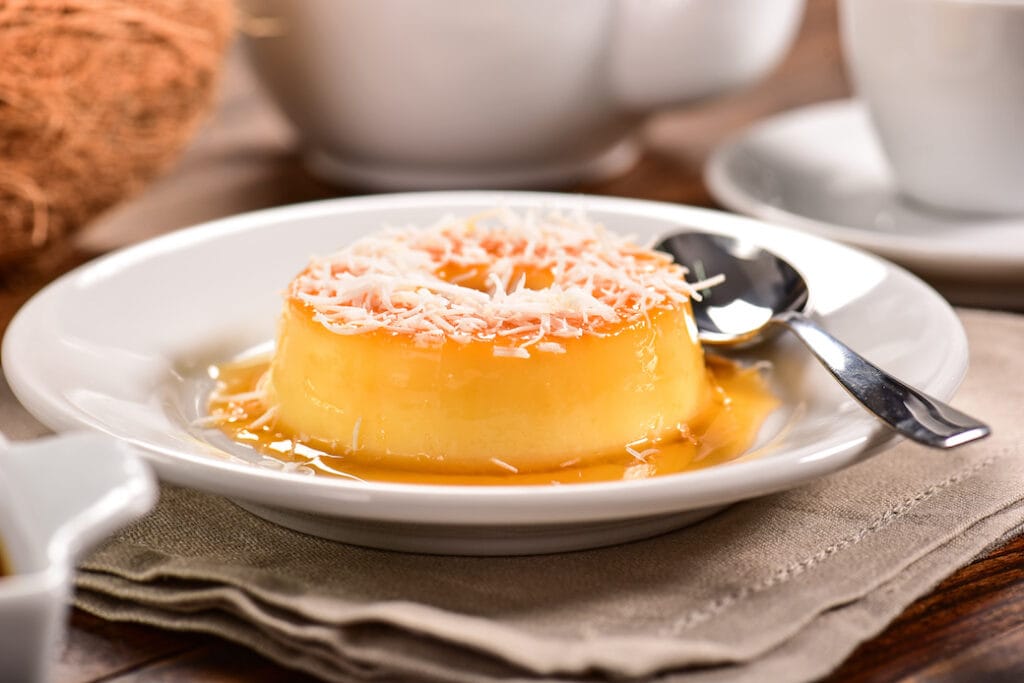
Flan de Coco
Flan is a revered dessert across the globe, and Costa Rica is no exception. However, you’ll hardly ever find just plain flan- it’s almost always prepared with coconut. It’s a flavor you have to try- this Costa Rican dessert is one that is usually served in restaurants, so keep your eye out for it on the menu.
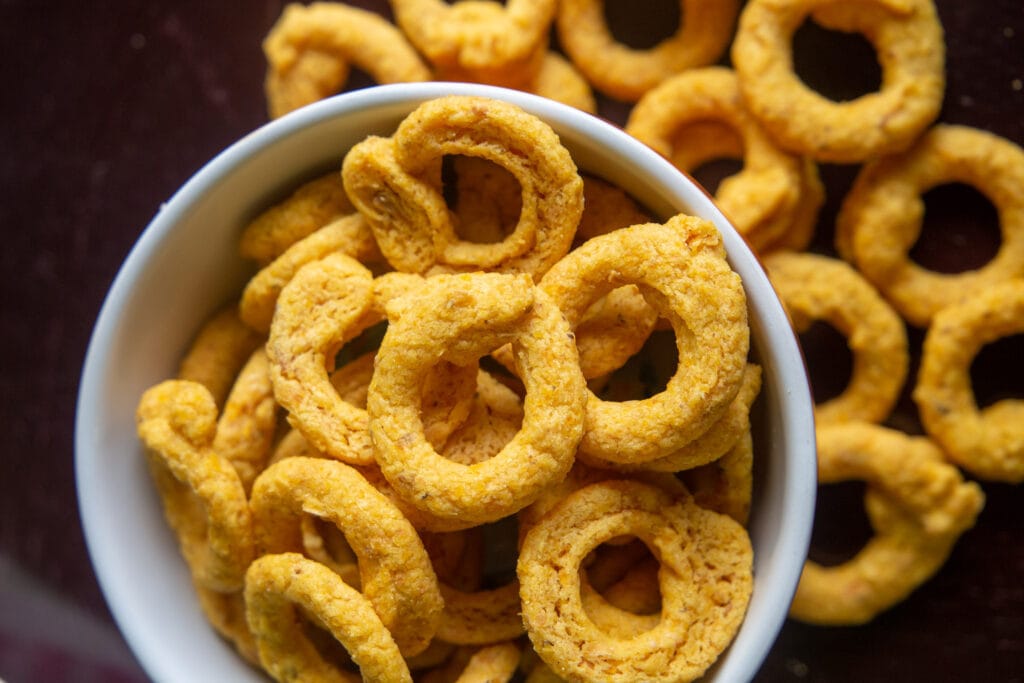
Rosquillas
Costa Rican Rosquillas are compact corn cookies that can be made savory or sweet. Recently hailed as an important Blue Zone food (foods that promote longevity), these tiny cookies originated on the Nicoya Peninsula but have quickly become a national favorite.
You can find prepackaged cookies throughout Costa Rica- they are in the cookie aisle in grocery stores. They are also fun to make with friends, so if you aren’t headed to Costa Rica soon you can always make them at home!
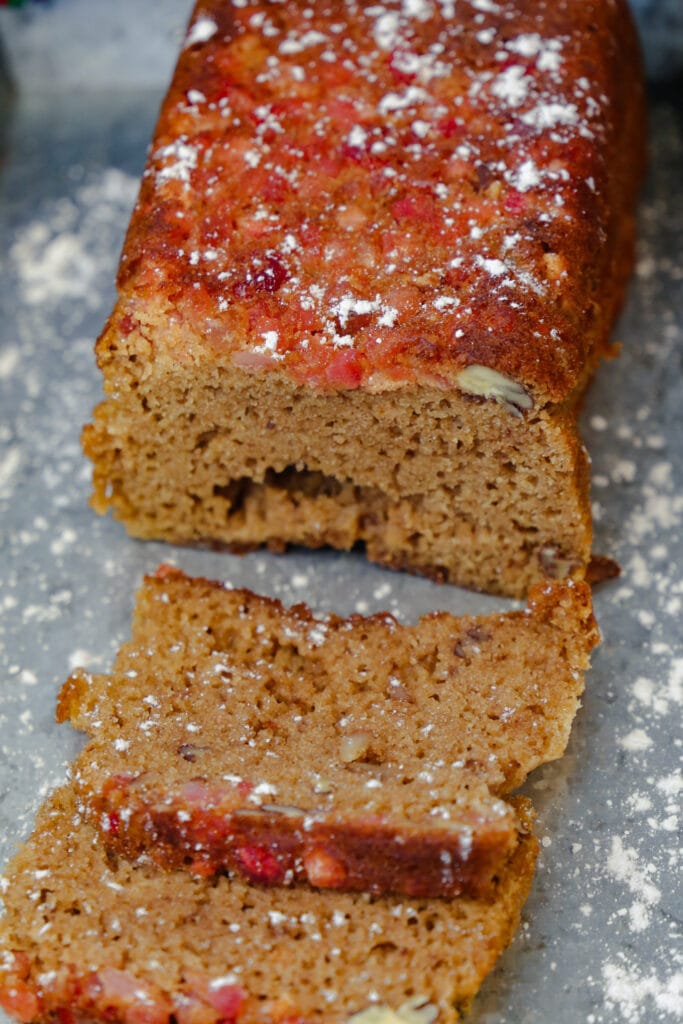
Christmas Cake
Some Costa Ricans wait all year for Queque Navideño– a traditional Costa Rican fruit cake that is traditionally made for Costa Rican Christmas.
This dense cake is heavy on nutmeg and flavor. Rum-soaked fruits speckle the cake, and for good measure, most Costa Ricans pour rum over the cake as well just before serving. If you are in Costa Rica for Christmas, you can find this cake everywhere from bakeries to grocery stores.
Join me over at my favorite place- Instagram.
Pin it!
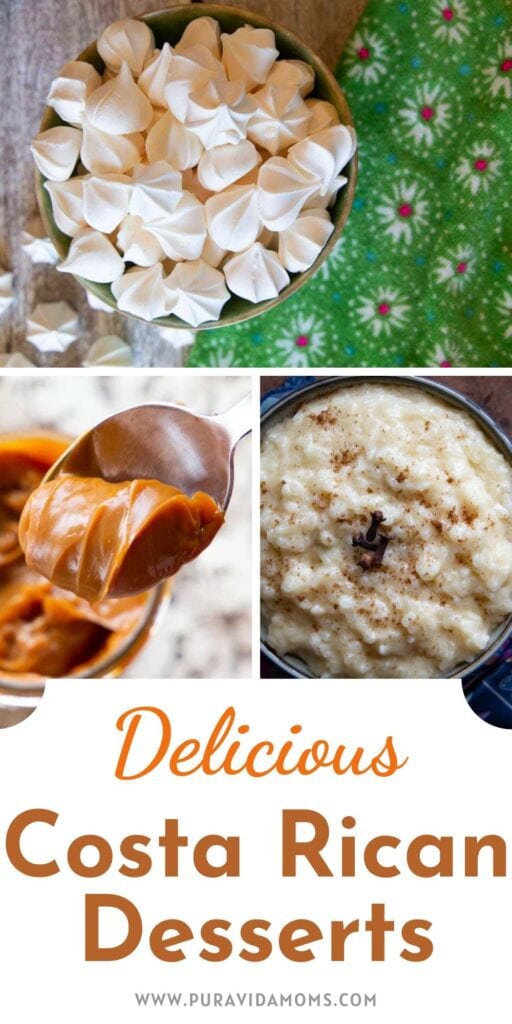

Christa Jimenez
Welcome! I’m Christa, a Spanish teacher married to a handsome Costa Rican and mother of two bilingual daughters. We’ve spent over 25 years living in and traveling to Costa Rica with our daughters, and this website is my love letter to all things Costa Rica- and to bilingual parenting too. You can read my full story here. Thanks for stopping by!

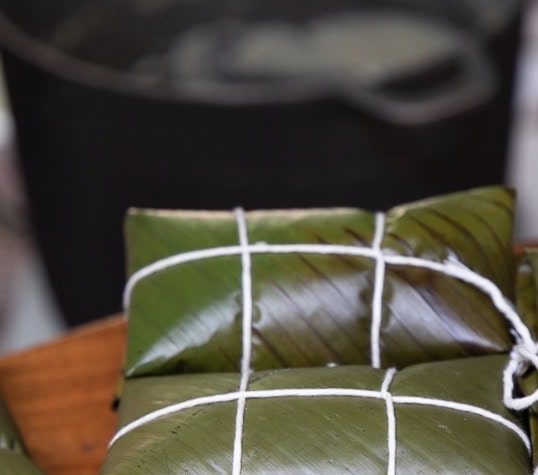
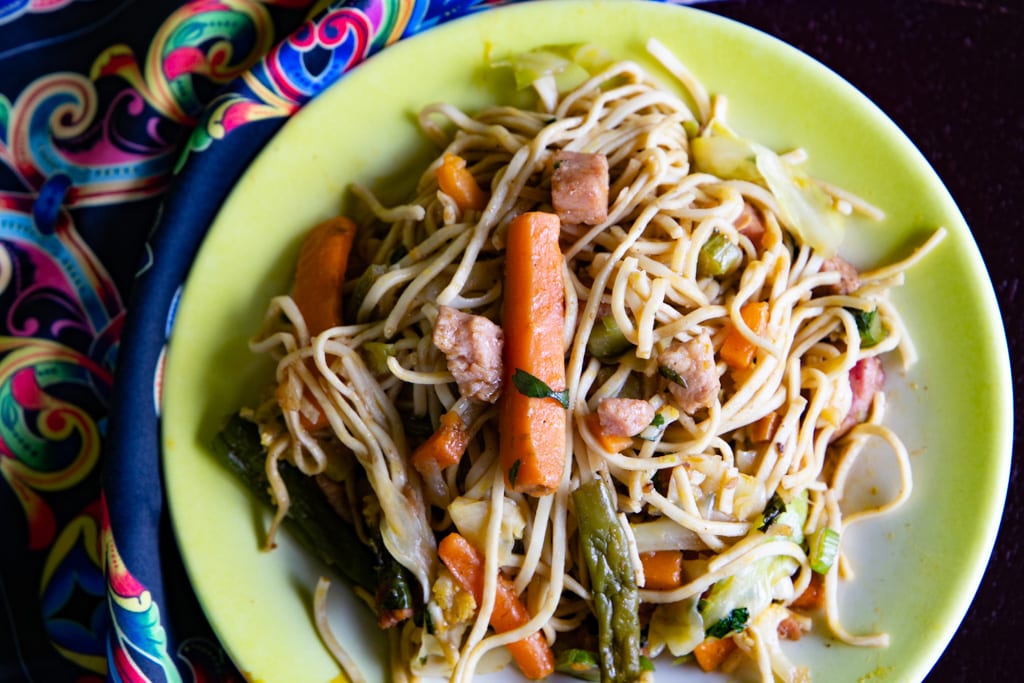
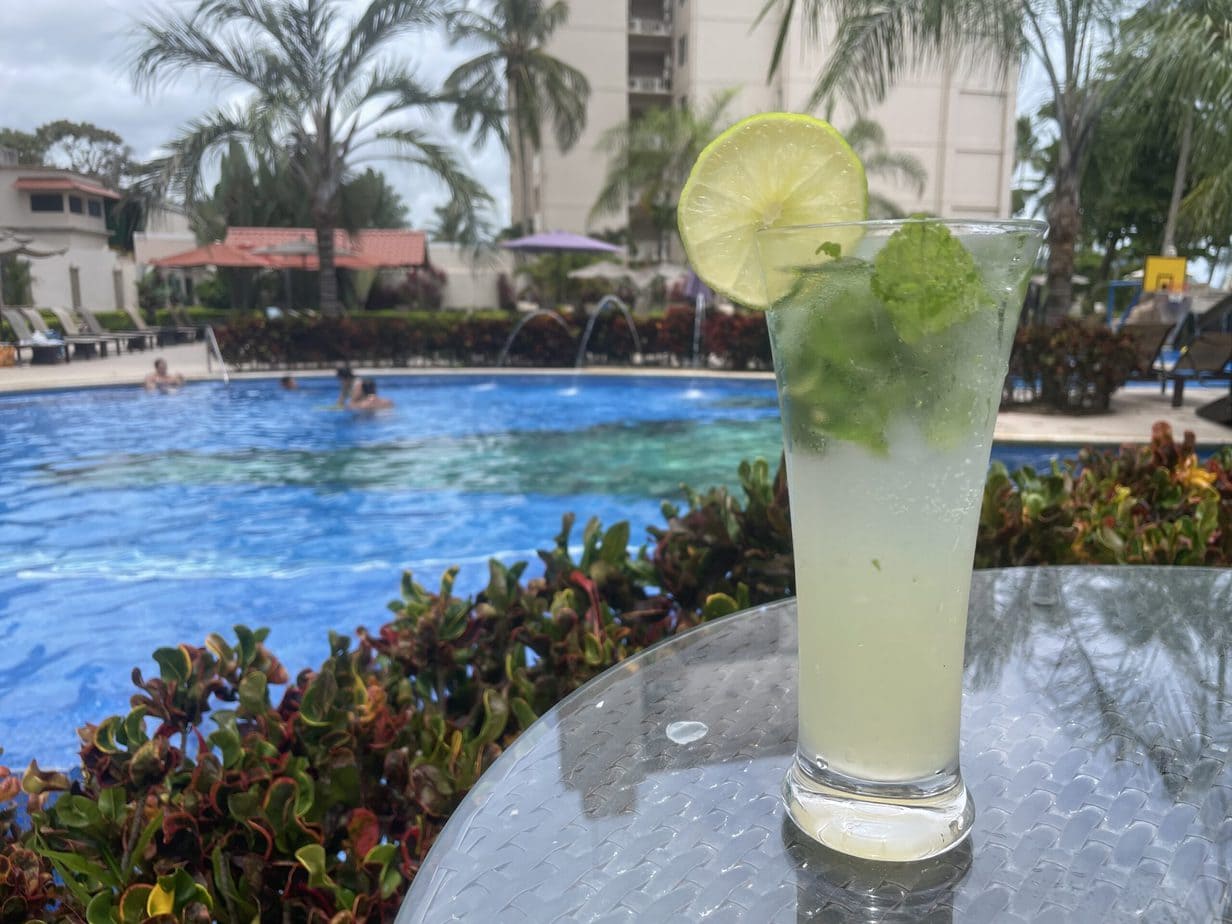
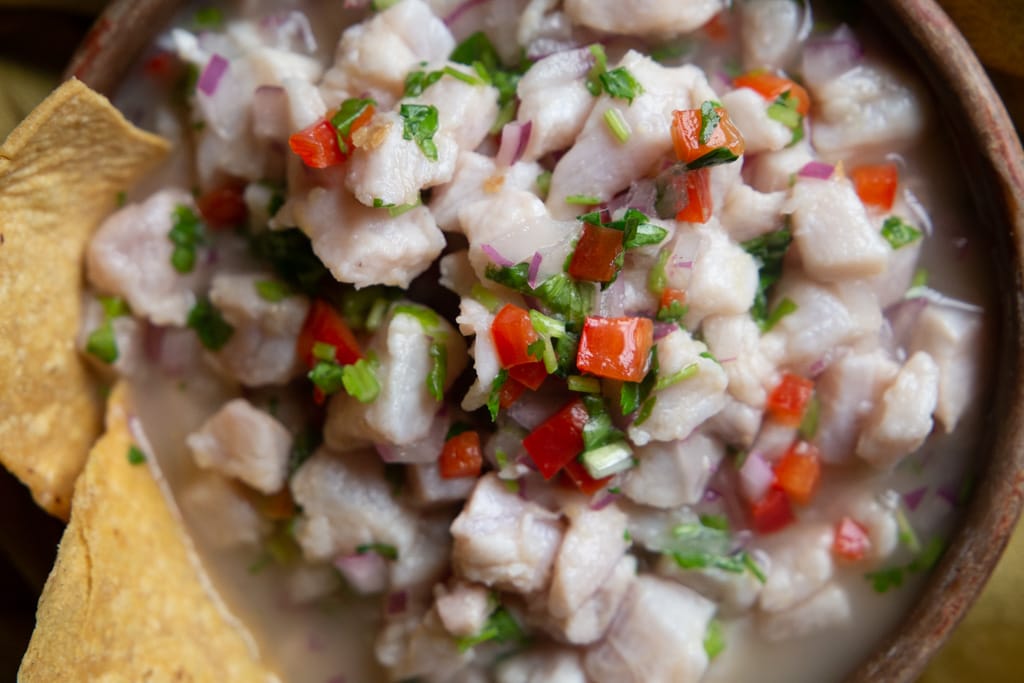
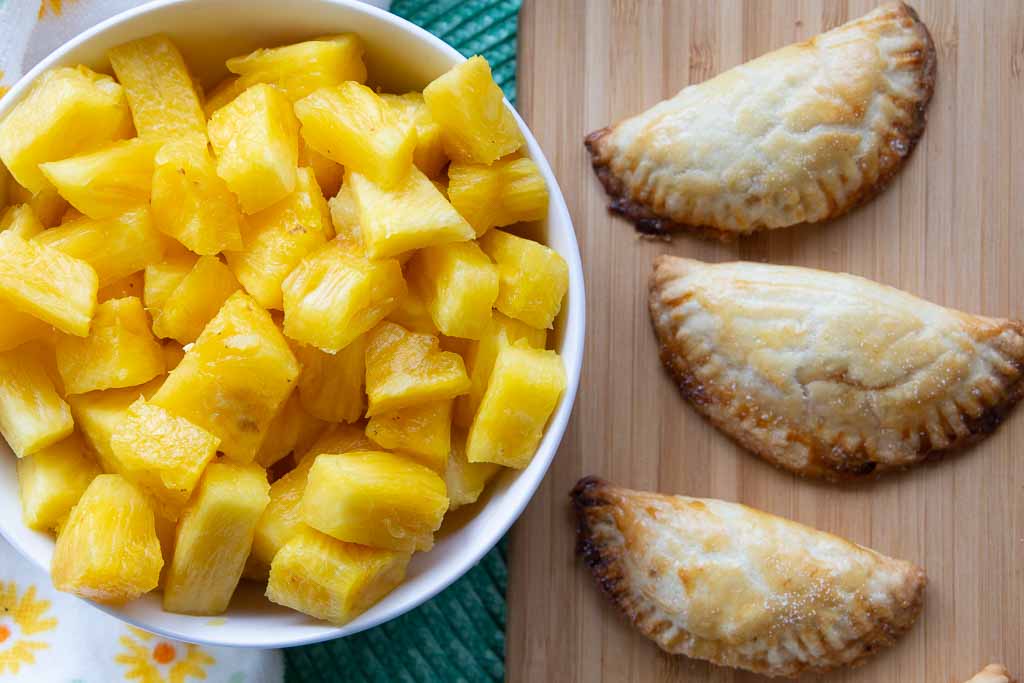
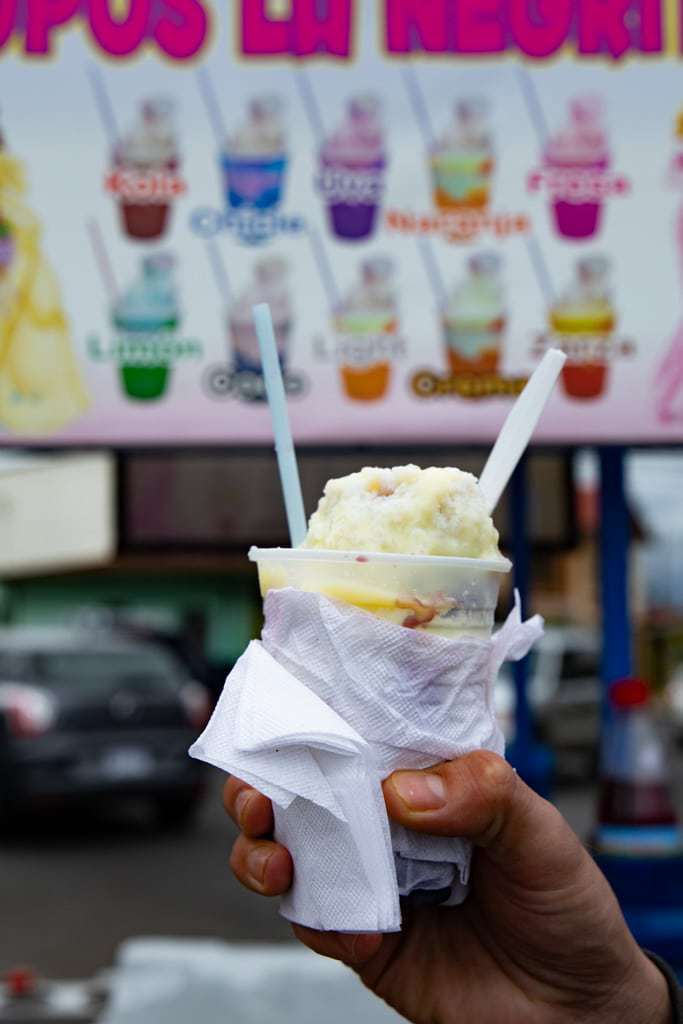

I read and re read the part where you said most costarican homes don’t have ovens and instead use gas stovetops. This is absolutely not true and really weird to read. I was born in the 70’s and I don’t remember a single home without an oven. We used to have a gas stovetop and used it if for some rare reason we lost power. We don’t want people thinking we live in an island and are chased by dinosaurs!😂😂😂
Interesting! I have spent a lot of time in a lot of kitchens without ovens- but in more rural areas. Did you live in the city? ~Christa